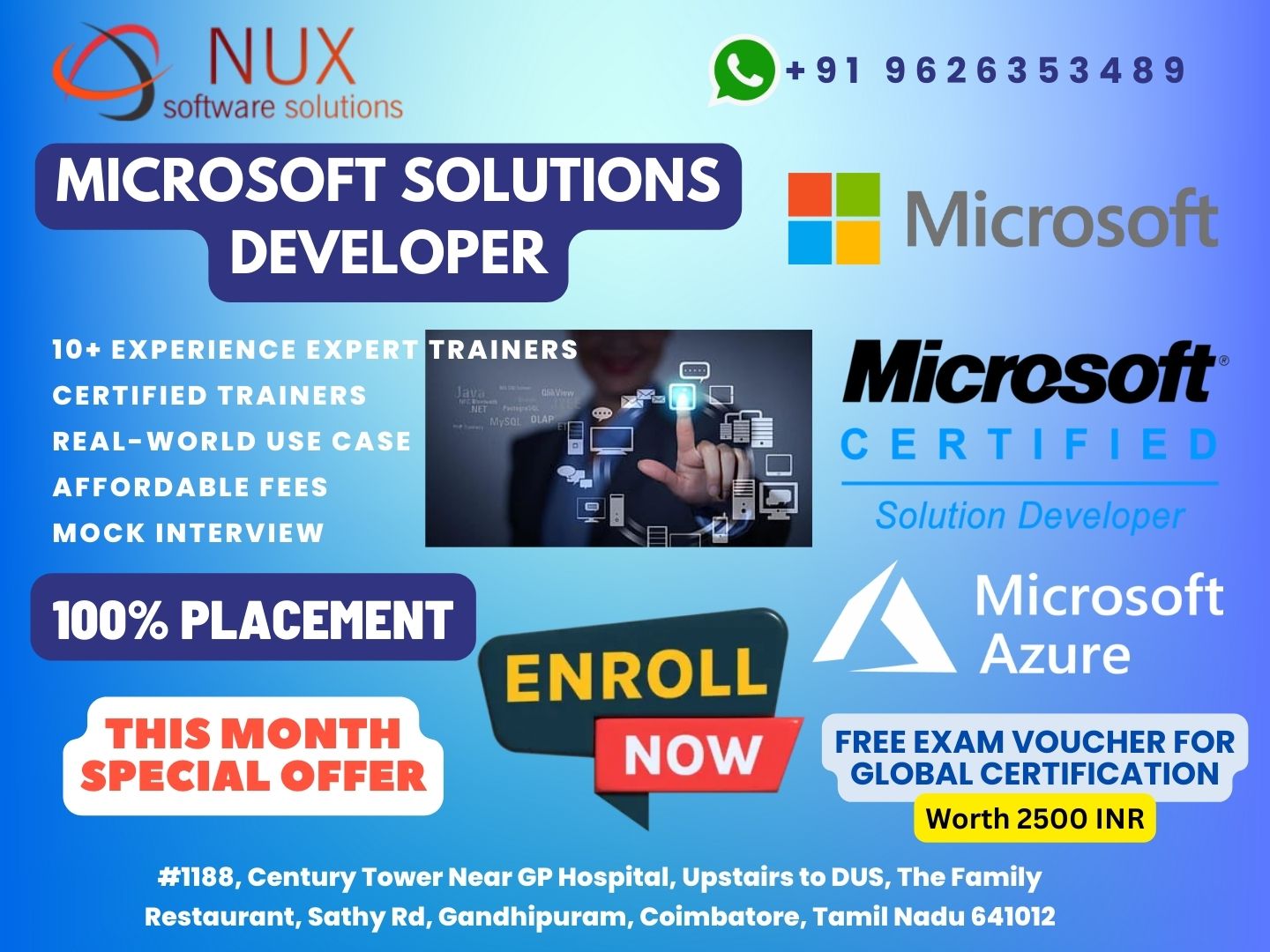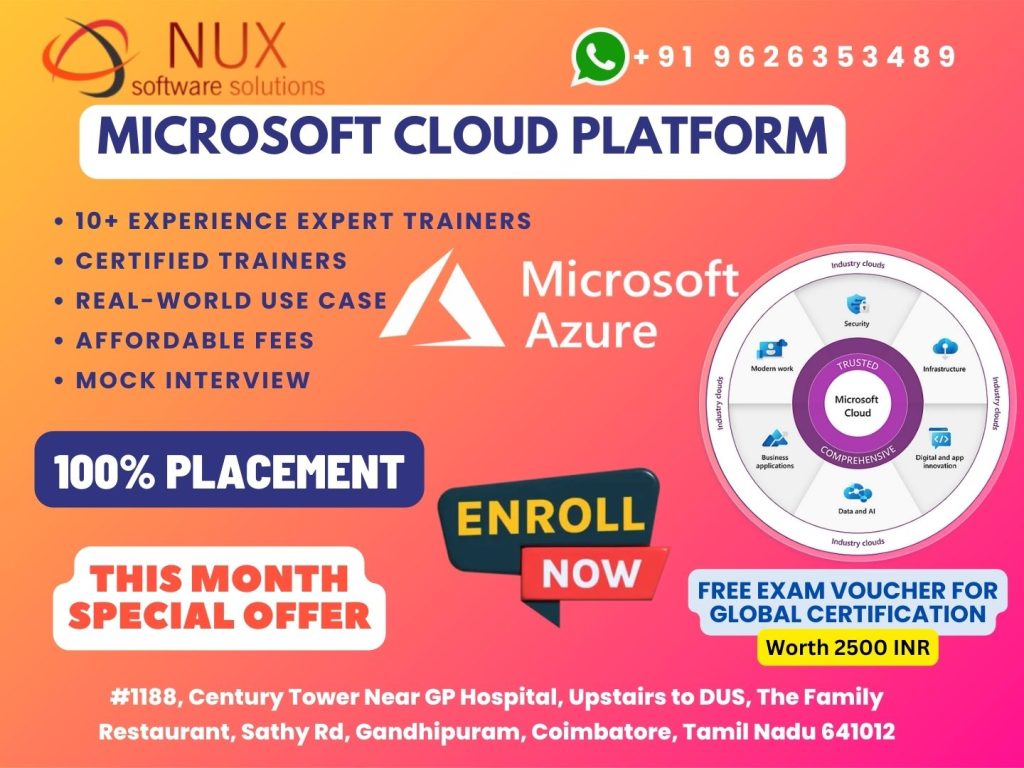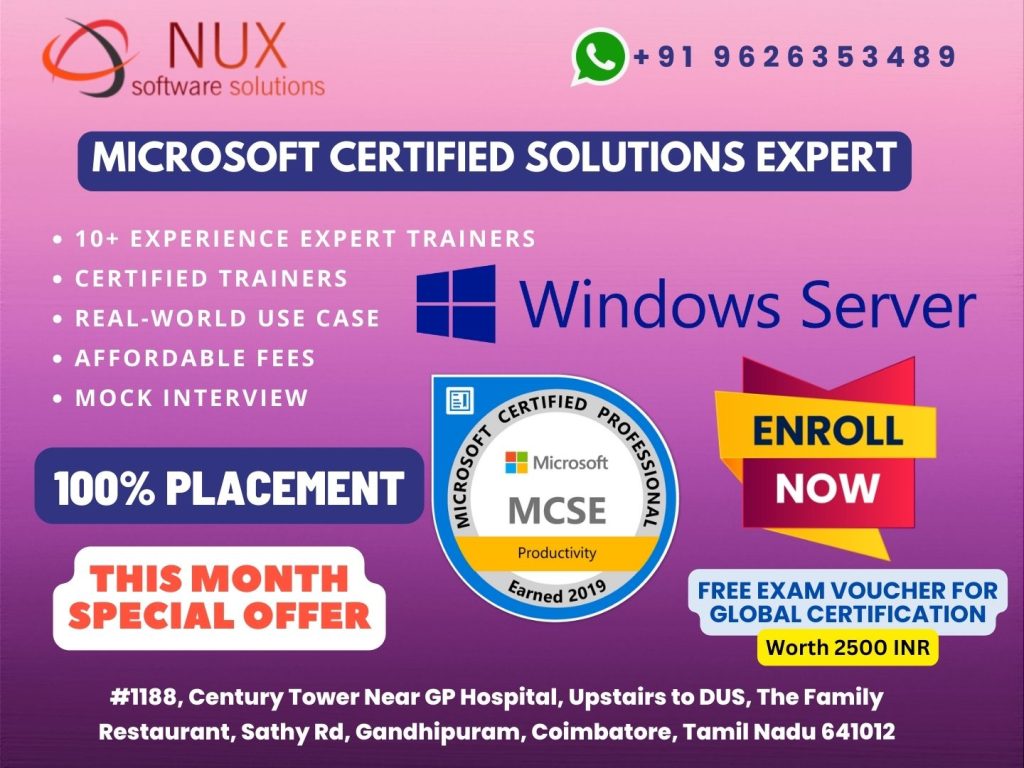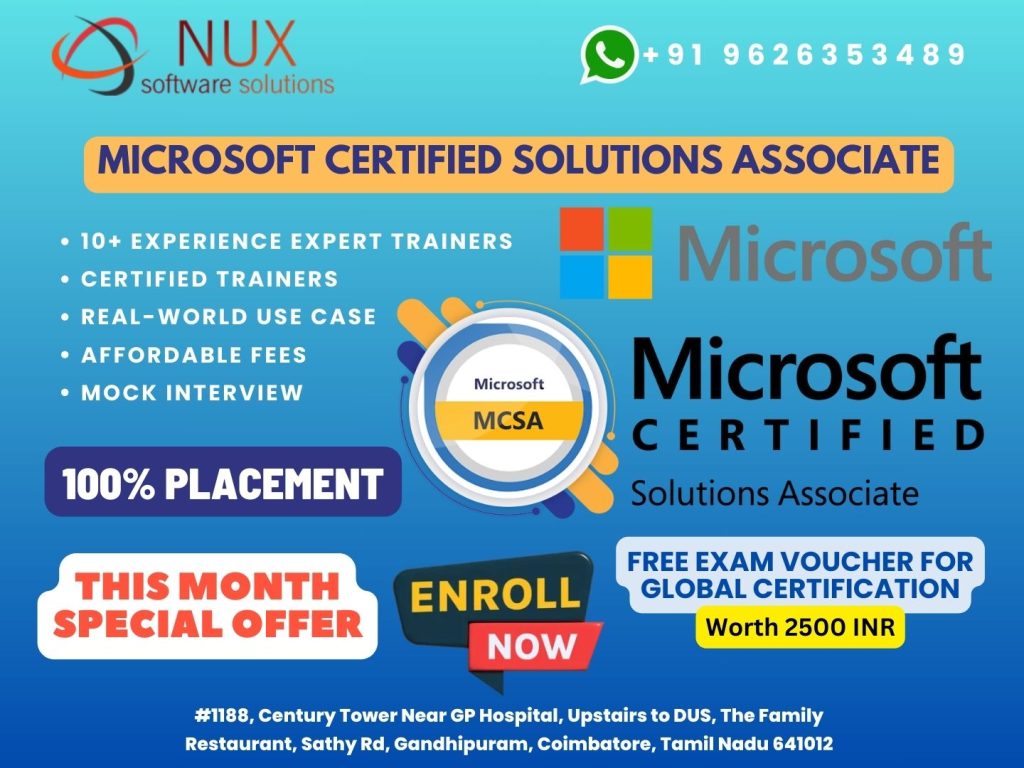Microsoft Solutions Developer (MCSD)

Course Summary
The Microsoft Certified Solutions Developer (MCSD) certification has long been a respected credential for developers building web, desktop, and cloud-based applications using Microsoft technologies. Though officially retired as a certification title, MCSD still represents a recognized standard of expertise in Microsoft development frameworks, including .NET, C#, Azure services, and Visual Studio.
This course provides a comprehensive path for developers who want to build scalable, secure, and modern enterprise applications using Microsoft’s full-stack tools, preparing them for roles in software development, cloud integration, DevOps, and solution architecture.
Why Choose This Course
Microsoft’s ecosystem remains one of the most widely used platforms in enterprise development. This course gives you:
Hands-on training in Microsoft .NET and C# development
Deep coverage of modern application architectures and patterns
Project-based learning to build web apps, APIs, and cloud-integrated solutions
Alignment with technologies covered in the former MCSD: App Builder certification
A strong foundation for transitioning to current role-based certifications like Azure Developer Associate (AZ-204)
Training is delivered by expert instructors with real-world software development and cloud deployment experience, ensuring learners gain both technical depth and practical application.
Who Should Enroll
This course is ideal for:
Software developers and programmers using or planning to use Microsoft technologies
Web and application developers seeking to expand into enterprise-level app development
IT professionals transitioning from support/operations into software development
Professionals aiming for cloud-based application roles using Microsoft Azure
Developers preparing for Microsoft role-based developer certifications
Skills You Will Gain
Full-stack development using ASP.NET MVC, Web API, and Entity Framework
Building and consuming RESTful services and modern UIs
Application lifecycle management with Visual Studio and Azure DevOps
Integration with Azure services like App Services, Functions, and Storage
Debugging, testing, and deployment of .NET applications in production environments
Building secure, responsive, and scalable applications for enterprise use
Career Benefits
After completing this course, you will:
Be equipped for roles like Full Stack Developer, .NET Developer, Azure Developer, or Solution Architect
Gain real-world project experience using Microsoft development tools and cloud services
Build a development profile suitable for enterprise IT, product companies, and startups
Strengthen your path toward certifications such as Microsoft Certified: Azure Developer Associate (AZ-204)
Be capable of designing and deploying custom applications that meet business goals and scale with the cloud
Build with Confidence. Deploy with Microsoft.
Whether you’re modernizing legacy systems or building new cloud-native applications, mastering Microsoft’s developer tools opens the door to enterprise-grade opportunities.
Start your MCSD journey today.
Microsoft Solutions Developer (MCSD) Syllabus
Modules
Chapter 1. Develop a XAML page layout for an adaptive UI
1. Construct a page layout
- Configure a RelativePanel layout; select the appropriate XAML layout panel based on the UI requirement; configure a grid with appropriate column and row properties; configure alignment, margins, and padding
2.Implement responsive and adaptive UI behaviors
- Differentiate between responsive and adaptive UI behaviors, create responsive and adaptive UIs by using VisualStateManager and AdaptiveTriggers, implement settings syntax for element properties and attached properties
3.Create and use custom controls within an adaptive UI
- Evaluate when to create a custom control; create a custom control; implement styles, themes, and resource dictionaries; apply styles to custom controls by using Generic.xaml
4.Optimize a page layout
- Reduce complexity for performance gains, reduce unnecessary nesting
Chapter 2. Implement page navigation and lifecycle events
1. Choose the appropriate navigation structure for an app
- Evaluate when to implement the Hub, Master/Details, Tabs and Pivot, and Nav Pane navigation patterns; evaluate when to implement a custom navigation pattern
2. Implement Nav Pane navigation
- Load page content by using Frame.Navigate, implement page navigation by using the Nav Pane pattern; implement a SplitView control for use as a navigation pane; support accessibility requirements within navigation by implementing key based navigation, UI automation, and narrator; handle Back button behavior for different Windows 10 device families
3. Manage app activation
- Launch an app, activate an app on Startup, implement activation from a deep link, implement activation based on Search integration, implement activation from a secondary tile
4. Manage app suspension and resuming
- Prepare an app for suspension, resume from suspension or termination, extend execution and monitor suspension errors
Chapter 3. Implement data access and data binding
1.Access data by using Entity Framework (EF)
- Access data by using EFCore with SQLite, implement a local SQLite database
2.Implement the {Binding} extension
3.Implement the {x:Bind} extension
4.Implement MVVM classes and class interactions
- Implement event binding by applying command patterns, implement a Dispatcher to update the UI thread with async return data
5.Implement app-to-app communications
- Integrate a Share contract to share content with another app, integrate drag-and-drop, launch an app for results, implement app extensions, implement App Services
6.Implement REST Web Services
- Implement JSON and data serialization, access cloud data and Web APIs by using HttpClient
7. Implement file system access
- Manage storage by using StorageFile, StorageFolder, and StorageItem; access a file location by using FilePickers; implement data roaming and roaming folders
Chapter 4. Implement feature detection for adaptive coding
1.Implement API detection within adaptive code
2.Implement Type detection within adaptive code
3.Implement supported capabilities
- Implement support for a microphone, implement support for a webcam, implement support for location, implement support for enterprise authentication
Chapter 5. Manage user input and custom user interactions
1. Implement command bars, flyouts, and dialogs
- Implement command bars and AppBarButton buttons, implement context menus and menu flyouts, implement content dialogs, display a tooltip by using ToolTipService, display a pop-up menu, implement control over app settings
2. Implement support for traditional and touch input devices
- Support touch input, support mouse input, support keyboard and virtual keyboard input
3. Implement speech and voice commands
- Support speech synthesis, support speech recognition, support Cortana integration, support Personal Assistant Launch capability, support voice commands
4. Implement alternative forms of input
- Implement inking, implement camera input, implement location services and GPS input
Chapter 6. Manage authentication and identity management
1. Implement authentication using Web Authentication Broker
- Implement web service authentication, implement OAuth, implement Azure Active Directory authentication
2. Manage credentials securely with Credential Locker
3. Implement two-factor authentication
- Implement two-factor authentication using Microsoft Passport, implement two-factor authentication using Windows Hello
Chapter 7. Implement notifications, background tasks, and reusable components
1. Create and consume class libraries and Windows Runtime components
- Develop Windows Runtime components, develop class libraries, integrate class libraries and Windows Runtime components
2. Implement tile and toast notifications
- Implement adaptive and interactive toast notifications, implement local tile notifications
3. Create and register a background task
- Create a background task project and reference the background task within a project, implement background task event triggers and conditions
4. Implement and manage a background task
- Monitor background task progress and completion, manage task lifecycle, share data and events between an app and its background tasks, call a background task directly
5. Create and consume a Universal Windows Platform (UWP) app service
- Specify the AppService extension, implement app service as a background task, deploy the app service provider, call app services



